EPISODE TRANSCRIPT:
Intro:
Welcome to That Annuity Show, the podcast that will make you an expert in explaining annuities to your clients. Give us 30 minutes each week, and we’ll shave hours from your client presentations. Now, here’s your host, Paul Tyler.
Paul Tyler:
Hi, this is Paul Tyler, and welcome to another episode of That Annuity Show. And today, we’ve got a full complement of our hosts and co-hosts. Mark, how are you?
Mark Fitzgerald:
Doing great, Paul. Good morning. How are you?
Paul Tyler:
Will [Morecraft 00:00:40], how are you? We missed you-
Will Morecraft:
Great.
Paul Tyler:
… the last couple of episodes.
Will Morecraft:
Great. Great to be back.
Paul Tyler:
Yeah. And Ramsey, good to see you as usual. Do you want to introduce our very special guest we’re honored to have on our show?
Ramsey Smith:
Absolutely. So Paul, today, Paul, Mark and Will, today, we’re honored to have with us Professor Moshe Arye Milevsky. We’re going to call him Moshe today, per his instructions. And hopefully, many people in our audience will already have heard his name or know who he is, but for anybody that’s happened to somehow miss out, Moshe Milevsky, Moshe, is really, in many ways, one of the godfathers of longevity academia. And if you’ve been listening to our show, they’ve been any number of people that have been on our show over the course of the last six months or so who in some point in time will make reference to or pay homage to having learned much of what they do from Moshe. So we’re very honored to have him here today, and we’re going to hopefully touch on a number of topics, but the biggest thing going on right now is that Moshe has just published a new book called Retirement Income Recipes in R.
Ramsey Smith:
Now, Moshe is a professor at the University of Toronto, Schulich School of Business, and has received any number of awards, probably more than I can mention in this short intro, but one of the key things that I saw that was interesting, he was named by Investment Advisor Magazine as one of the 35 most influential people in the US financial advisory business over the last 35 years. And he’s also received a Lifetime Achievement Award from the Retirement Industry Association. 65 peer-reviewed articles, this is his 15th book, and I think it just came out very recently. So we’re delighted to have you here Moshe.
Ramsey Smith:
And with that, I guess, get us started. Tell us a little bit about why you decided to write this book and what your main goals were in putting it together.
Moshe Milevsky:
So, first of all, Ramsey, thank you very much for the lovely introduction. I’m honored to be on the show. You’ve had some great guests, and I’m glad to follow in their footsteps.
Moshe Milevsky:
In terms of the motivation for the book, I teach a course at the Schulich School of Business. The teaching has actually been taking place right here in my office, obviously, for the last six months. We’ve been doing everything by Zoom, but I teach a graduate course and an undergraduate course on retirement income planning. So we have basic personal finance courses, where we teach people about mortgages and life insurance and income taxes, and how to figure out whether to buy or rent. But I designed a course that was exclusively focused on retirement income planning, which is a very different beast than accumulation planning. Some of the risk metrics products that we use, the strategies, just the language that we use in accumulation planning is very different than retirement income planning.
Moshe Milevsky:
So I started teaching a course to our students on retirement income planning, and we discuss things like sequencing risk, and we discuss things like annuities, and we discuss things like optimal withdrawal strategies and so on and so forth. There just wasn’t a good textbook to use. This is relatively new. The whole idea of decumulation is a new area. And there were great articles by authors out there. You mentioned Wade Pfau earlier. He’s done some great work. There’s been others that have written. Michael Kitces would be another name that I’d say. These have all put together a lot of articles, but there was no textbook. So that was number one, I needed a textbook.
Moshe Milevsky:
And number two, there’s a growing movement at the university, certainly in our business school, to teach students how to code, how to write code. There’s a growing awareness, if you talk to big software companies, that they need more people who know how to write code, whether it’s in Python or C or Fortran, or the language that I decided to use, which is R, which is a freely available language for coding snippets of things and perhaps even larger programs. So I decided to merge the two.
Moshe Milevsky:
So to answer your question, I decided to write a textbook that would focus on retirement income planning, but I decided to do it in a way that we would be able to teach our students how to code in R so that they can go out into industry and work in the many shops, whether it’s on registered investment advisor or whether it’s Goldman Sachs or Merrill Lynch or some other place, anybody working in a retirement income field has to be able to compute things. Not just to sell things, but how to compute numbers and risk metrics. And the purpose of the book is to teach them how to do that in a transparent way, easily replicable way, so that when somebody says there’s a 97% chance you’ll have enough money, they actually know how to do it and how to compute it and how to replicate. So that is the long-winded answer to your question, why did I write this book?
Paul Tyler:
Listen, I’m a absolute fan of R, Moshe, and maybe, I’m sure some of the people are going to say, “R? Are, A-R-E? What exactly is this?” My daughter took a statistics course in college and I said, “What are they teaching you? SPSS or SASH?” She said, “No, no, no. R. You don’t know what this is.” Okay. Grab a book, learn how to do this. I guess [crosstalk 00:05:49]-
Moshe Milevsky:
Well, it’s an interesting point. I’m going to just jump in, your daughter. So I have a daughter who’s studying engineering, and she’s learning Python. And when I started writing this thing about a year ago, she said to me, “Dad, R? No, man, Python.” And so we’ve been debating this at the dinner table, and the rest of my family’s sick of this.
Moshe Milevsky:
Hey, to make a long story short, I was trying to compute an algorithm to see whether the 4% rule works or not. What’s the probability the 4% rule works? I wrote it in R. She looked at it and she said, “Oh man, that’s so clunky. I could do it in Python faster.” Equal. It was not faster in Python. She wrote the simulation in Python. I wrote it in R, and mine was about three times faster.
Paul Tyler:
Well, I think-
Moshe Milevsky:
For the few geeks out there that are listening, for the few geeks, R actually worked better.
Paul Tyler:
Well, I think first of all, now I haven’t read your book. I read the description, saw some listings out there. Couple reasons. Now, first off, it’s very interesting language. It’s free, right? And it’s based on some [inaudible 00:06:56] powerful … You’re able to go out and download these amazingly free open-source algorithms. Does this potentially open the door to sophisticated planning to a bunch of people who can’t afford some of these more expensive software platforms?
Moshe Milevsky:
I think Paul, that you’re onto something, but there’s something that’s going to have to take place first. And that is we’re going to have to raise the level of the financial planning community so that they can learn how to code these things and learn how to use these things. Because right now, what worries me is the black box mentality in retirement income planning, where you have someone that doesn’t know a do loop from a for loop and says, “Oh. Monte Carlo says that this is the right product for you.” What does that even mean? How do you replicate it? Where did the numbers come from? So we need to raise the overall level.
Moshe Milevsky:
I think my personal philosophies do not rely on a piece of software where there’s 150 assumptions in the background that you don’t know. Write the code yourself. Now, most advisors will say, “I don’t have time to write code. I don’t even know what that means. I got to sell.” Hire someone in the office that does, because you can’t report statistics and metrics and summaries without understanding where that came from, or having someone on your team that does.
Moshe Milevsky:
So that’s what we’re trying to create on my universe, to create the next generation of retirement income planners that will assist to the charismatic people that are out there selling, but you need somebody in the office that understands this. Otherwise, I think the regulators, whether it’s the FINRAs and the SECs are going to go, “What is this sales piece? 5% on cash? You can’t turn 5% on cash.” That was built into the software. You didn’t know it.
Will Morecraft:
So Moshe, one quick question on that, because it’s, again, I’m a big fan as well and fascinated with the work you’re doing, especially at that college level. So the folks that you’re training through your courses, you said undergraduate and graduate, they’re going out into the workforce and it sounds like you’re saying that they might be ripe to be hired potentially by some of the more experienced financial professionals who don’t have this expertise or the time necessary to learn how to code. Would that be a pathway for one of your students?
Moshe Milevsky:
That’s my five to 10 year goal. So I think every, whether it’s an RIA or it’s a broker dealer, everybody understands you need to be within a couple of feet of a tax expert. You’re not a tax expert, but you need someone who you can bring in for a complicated day. You need someone that’s within walking distance that really understands social security. You kind of know, but you need someone that knows the devil in the details.
Moshe Milevsky:
I’m thinking that at some point, we’re all going to realize that you need someone who can quickly code up a numerical answer so that you can justify what it is that you’re saying and feel confident that that’s really the answer, that this annuity will help them avoid outliving their money. Or that this asset allocation is the right one, or the current strategies, where do you withdraw from first? The Roth or the IRA? You need someone in the office that understands the math or the coding, because otherwise, you’re just, I hate to say this, you’re just BSing.
Paul Tyler:
Yeah. Listen, we’re using this extensively. We’ve gotten a bunch of people internally to start to love the ability to do sophisticated analysis ourselves. So Mark, some of the data science work you’ve seen coming out of our product shop, right? That’s all in R. It’s an interesting challenge, Will. You think from a compliance standpoint, we’re all modeled to say, “Hey, we approved this piece of software.” It doesn’t really matter that you know how it works as long as you’re using the software and you put the numbers in.
Will Morecraft:
Well, that’s why I think it’s so important to be able to describe not just, as Moshe said, the black box, because everyone in here knows, but I’ll tell Moshe. I was a salesperson before I became a compliance professional, and we were using these rudimentary Monte Carlo simulations. I’m going back 20 years, that we’re …
Will Morecraft:
Honestly, in fairness, we could attempt to try to explain how it was ultimately arrived at that this certain asset allocation model should be the preference, or that you’ll have money through the age 97, to borrow your example. But there was a lack of, I think, true understanding. And we’ve talked a lot about transparency. We’ve talked a lot about, on this show, about the importance of not just selling a product, but really going deep and understanding what the objectives are. So everything that Moshe is talking about points to that fundamental education, knowledge and ability to explain how you might arrive at a particular product sale, not just start with the product sale.
Moshe Milevsky:
And Bill, just to build on what you’re saying, just to build on it, another audience for my students, or to put it this way, another place that I’d like to place them is in the compliance departments, who are right now, mostly filled with lawyers, I’m generalizing, and their knowledge of some of the underlying technical algorithms is just nonexistent. I know this because I write white papers and I try to get presentations approved, and I’m trying explain to people basic Marco, it’s 101. “No, no, no, no. That’s risk, that’s return.” It’s just not taught in law schools.
Moshe Milevsky:
So what we need to do is we need to place somebody who really technically gets it, and they’re the ones that they go, “Hey. Can you approve that? We’re trying to approve this, but we don’t really understand this equation.” “Ah, okay. Here, let me explain it to you.” And that’s a huge, because everybody’s got compliance. Everybody’s got a chief compliance officer. “Who do you lean on?” I ask the chief compliance officer, “When you don’t quite get what this thing is about?” “Oh, we don’t do that. We talk to the actuaries.” No, but they’re in a different department. You need someone internal. So I think there’s many, many places to put them.
Will Morecraft:
It’s a great, great point really because when it comes to anything, and I’m probably different from many compliance professionals given my background, but you’re right. You’re trained with a certain toolbox. And what you’re describing and what we’ve seen across the industry and new innovative methodologies and techniques is the ability to understand it and so that you’re able to utilize that understanding when you’re doing compliance evaluations of sales and other things.
Moshe Milevsky:
Look, just this whole idea of illustrations, illustrating a product back to 1929, I really don’t think that’s valid. So what we did is we went back to 1929. It was a different world. The Federal Reserve as we know it didn’t exist. You shouldn’t be allowed to use 1932 for anything. I’m sorry, but that seems to be the standard. We went back to 1929. No. You need a forward-looking model. What does that mean, forward-looking model? What does that mean? A model that looks nice? What does that even mean? [crosstalk 00:13:55]-
Will Morecraft:
We’re all dealing with hypothetical back-casted performance for new industries. This is an all new world for us to be able to, when you don’t have actual performance on a new index, how do you navigate that in this [crosstalk 00:14:06] environment?
Paul Tyler:
Back cast for 1932 that didn’t ever exist. Okay. That’s an interesting question.
Moshe Milevsky:
Yeah. Yeah.
Mark Fitzgerald:
Moshe, [crosstalk 00:14:12]-
Moshe Milevsky:
On a RILA. On a RILA, by the way, right? And as if you had liquid options on all markets at all time. “Oh yeah. We had S&P 500 options in 1932.” Really? Chicago Board Options Exchange, or Chicago Board of Trade? Where did you get the liquid index options? And we used Black-Scholes. They weren’t born in 1930. It goes on and on.
Mark Fitzgerald:
Moshe, you had mentioned the 4% withdrawal rule and that being one of the catalysts of driving you to write the code. And that obviously seemed to be, that rule seemed to be for years what people use as their baseline factor in terms of determining things. What are some of the, I guess, fundamental flaws that you see in that today as things have changed over the years?
Moshe Milevsky:
Yeah. So Mark, I don’t mean to put you on the spot, but there are six different ways to interpret the 4% rule. So I’ll answer your question when you tell me which one of the six you’re talking about.
Mark Fitzgerald:
An open inflation adjusted.
Moshe Milevsky:
Inflation adjusted what? Walk me through. I have $100, and I go to you, Mark, and I say, “Mark, I want to do a 4%.” Walk me through what my life looks like for the next few years.
Mark Fitzgerald:
Well, so I think that’s the challenge right there. So I think fundamentally, they’re saying, if you do an 80/20% split equities to fixed income, and you withdraw based on a 4% withdrawal rate, inflation adjusted, there’s a X% probability that you’ll be successful.
Moshe Milevsky:
Right. So let’s just do a numerical example, just for the sake of the audience because this is an issue for me. This means different things to different ears. So I have $100, and in the first year, I’m going to pull out $4. What happens in the second year? What happens in the second? The first year I pull out four, what do I do in the second year, according to the 4% rule?
Mark Fitzgerald:
So according to the inflation adjusted dynamic, my understanding would be that you would go up 4% based on 4% plus inflation on that withdrawal rate.
Moshe Milevsky:
Okay. So give me a dollar value because my mother understands dollars and cents. Percentages aren’t good. So mom, how much did she withdraw?
Mark Fitzgerald:
So $4-
Moshe Milevsky:
So about $4 last year, is it?
Mark Fitzgerald:
So $4.03.
Moshe Milevsky:
All right. So that’s what you mean by the 4%. Because a lot of people interpret it as 4% of the current value of the portfolios if it’s an RMD, right? A lot of people interpret it that way. Okay. And what do I do the next year, just so that we make clear? So this year she pulled out 4.03. What’s she going to do the next year?
Mark Fitzgerald:
So it’d be little over 4.06 because you take the [crosstalk 00:16:37]-
Moshe Milevsky:
All right. Very good. What happens if the market goes down 30% between this year and the next year? We’ve had a horrible correction. Am I still telling her to pull out the 4.06?
Mark Fitzgerald:
I think that there’s a standardized component of that that says yes, and I think that’s where the fundamental flaw is in that dynamic, that it would stay that and it would inflation adjust off of that dollar factor.
Moshe Milevsky:
Right. So the market can go down 50%. I’m still telling mom you pull out 4.06?
Mark Fitzgerald:
Based on-
Moshe Milevsky:
Yeah.
Mark Fitzgerald:
Correct.
Moshe Milevsky:
And if the S&P soars 30%, I’m telling her to pull out 4.06. Basically, no matter what happens in the market, I’m telling her to pull out 4.06. I’m telling her two years in advance already what you should do two years from now?
Mark Fitzgerald:
Correct.
Moshe Milevsky:
Right. And anybody thinks that’s a normal way to manage your life? To tell someone, “For the next 30 years, this is what you wear no matter what the weather is. You’re going to wear that sweater in April.” I don’t understand why I have to argue with people about how simplistic this rule is, but yet I’ve been to it for 20 years.
Mark Fitzgerald:
Agreed, and I think that’s part of the biggest challenge with it, is that it’s so static in terms of what its interpretation is.
Moshe Milevsky:
Yeah. Yeah.
Ramsey Smith:
So I raised my hand because I felt like I had to like I was in class. You just hit us with a Socratic method. [crosstalk 00:17:51]-
Moshe Milevsky:
I was going to say, “This sounds awful socratic.” I’m familiar with this.
Ramsey Smith:
Yeah. I haven’t seen that since I was in business school. Thank you.
Moshe Milevsky:
Hey, what do I do for a living? This is-
Ramsey Smith:
So, yeah. So for me, when I think 4% rule, I think it’s 4% off of what the balance is. So it’d be 4% on 100 in first year. Next year, it’s … So it was 96 plus whatever the return is, right, in the ensuing year, and then you withdraw 4% on that. And so what that means is that you’re spending budget goes up and down with the markets over time, which obviously, is problematic. So that’s my interpretation.
Moshe Milevsky:
Well, that’s not what Mark said. That’s not what Mark said.
Ramsey Smith:
But no. We-
Moshe Milevsky:
Mark had a different interpretation.
Paul Tyler:
That’s different.
Ramsey Smith:
Exactly. You said there’s six different interpretations. We’ve already discovered two in a very short period of time.
Moshe Milevsky:
That’s why I’ve got three chapters on this in the book because everybody sees 4% and reacts differently. And it’s just about just what 4% that you’re talking about before we improve it? Which is why I’m a big fan of intelligent drawdown rates. That’s what I call it, IDD. Intelligent drawdown rates. What do I mean by intelligent? Where at the beginning of the year, we look at what the market value is, and we do some sort of combination of what Ramsey said and what Mark said. I’ve got to stick to what I did in the past because we can’t have it too disruptive. On the other hand, I have to react to things. Endowments apply those rules.
Moshe Milevsky:
When you talk to Yale or Harvard or Stanford and you ask them, “How do you decide how much to pull out of the endowments? We’re in COVID, your tuitions are down.” “Well, what we do is a weighted average of what we did last year and where the market is now.” That’s a viable strategy.
Ramsey Smith:
So it’s very interesting to hear you talk about why it’s important to have more people do this. So I had a list of questions coming into this discussion. One of them was, well, in your introduction, you had said that you want to train more aspiring retirement quants. And so my question was, “Huh, how many do we need?” Now you’ve answered the question that we need a whole lot more because there’s a place for them in sales, in compliance and lots of other different areas.
Ramsey Smith:
And then so the next interesting piece here is that you place a very high value on engagement, another word that you used in your introduction. You really want people actually touching these problems and doing the calculations themselves, and it reminded me of something that I saw in one of your tweets. You made a comment about the Dow, about the Dow being useless, and I completely agree. And in my mind, I’ve always felt like we have a tendency in finance, as quantitative as finance is theoretically, we have a tendency in finance to rely on rules of thumb, and they seem to live well beyond their useful life. 4% rule is one, the Dow is another and then Libor is another one. There’s lots of them.
Ramsey Smith:
So it seems to me like a very fundamental part of what you’re trying to do is you’re trying to ask people to reconnect with the numbers regularly so we’re always making sure that we’ve essentially marked to market our benchmarking standard. Is that a fair description?
Moshe Milevsky:
Ramsey, you’re absolutely right. There’s nothing more boring to a 19-year-old senior, there’s nothing more boring than having an entire lecture on at what age should their grandparents take social security.
Ramsey Smith:
Right. Okay.
Moshe Milevsky:
And today we’re doing RMDs everyone. RMDs. Take out your calculators. RMDs.
Ramsey Smith:
Yeah. Yeah.
Will Morecraft:
Moshe, well-
Moshe Milevsky:
It’s totally disengaged from their life. So how do you make a 19-year-old or 20-year-old or 21-year-old interested in retirement income planning? You give them a coding problem. You say, “Look, here’s the issue. Sequence of returns is the coefficient on a regression of whether you had enough money and the decades return.” “Oh, okay.” “Please run a simulation and give me the regression coefficients.”
Moshe Milevsky:
Okay, that makes sense, that they know. It may make no sense to a lot of other people, but we’ve taught them statistics. We’ve taught them economics. You engage them by giving them computational problems that mean something to them. They can’t feel money yet. They don’t have any, but they can run these analyses. And then they feel comfortable to then support the people that are doing the actual sims. That’s my view of it. We need to make it interesting or they will drop the course and go and take a course on gender studies because that’s really fun.
Will Morecraft:
Moshe, do you find that those 19, 20, 21-year-olds are very, very interested in this coding and running these regression tests and everything that you’re describing?
Moshe Milevsky:
I’m stunned by the enrollment. I thought, “Okay, I’m introducing a course on pensions and retirement income planning in R. That’s got to be empty seat. Three people, and two of them are Russian mathematicians.” That’s what I thought I would get. And it turns out that I’ve got, full class, 45 [inaudible 00:22:29]. Why? Because they’re realizing, “Hey, I’m going to learn how to code, and that’s a skill employers want. Hey, I’m going to learn something that actually uses all the statistics I’ve been taught, and I’m going to be very valuable to my grandparents at the kitchen table because I’ve heard them talk about these things. Didn’t really know what it means, but I can create some code to answer it.” So I’m finding some [crosstalk 00:22:47]-
Will Morecraft:
Is it a variety of majors? Like statistics majors, engineering majors, finance, business? Are you pulling from all these different areas?
Moshe Milevsky:
I’m teaching within a business school. We don’t have dance majors coming in and saying, “I need to know some R to compliment the dance lessons.” These are business students who are taking marketing and accounting and economics and policy and management science. And they’re in their third and their fourth year, and they’re like, “I need an elective course that somehow brings this all together. Yeah. I heard about that Professor Moshe guy. Yeah, let’s give it a try.”
Paul Tyler:
So if I’m as a CFP, I’m mid-career, this sounds intriguing. How would I start to walk my way into this? Do I buy your book and take the course? Can I go lesson by lesson by myself at night?
Moshe Milevsky:
So you said mid-career. Can you give me a chronological age? [crosstalk 00:23:45]?
Paul Tyler:
I’m 45 years old. I got a CFP. I probably never saw myself doing this thing. This may be my second career. I’m okay with math. I certainly love conversations, but I like doing plans for people. What-
Moshe Milevsky:
So I would send you to a calculus refresher, just quickly, or an algebra refresher, because the book is replete with that. But if you say, “No, no, no. That stuff’s easy for me,” I would go through chapter by chapter.
Moshe Milevsky:
Now, [inaudible 00:24:12], I’m not trying to sell a book here or sell a course. What I’m trying to say is I’m trying to convince people that this is a career that you’re going to need. This is a service you’re going to have to rely on. You probably have a healthcare specialist within reach. I hope you have, on speed dial, a gerontologist or a social worker because you have clients that need that. Do you have a mathematician on speed dial? A quant on speed dial? Now if the answer is, “Why would I need that?” That’s what I’m trying to convince people to do.
Moshe Milevsky:
So it’s not necessarily to turn you into one, to know you need to go to them to get some answers because if you’re trying to convince the compliance person that this annuity solves a particular problem, you better have the right metrics.
Ramsey Smith:
So one of the things that I did, I went through your chapters, and I thought that there were a lot of interesting issues that you cover. You actually touched on one of them right there when you referenced Paul’s age. You said chronological age. You were very specific because I know you draw a distinction between chronological and biological age. That’s one of the top three or four things I saw that were interesting to me of the problems you solve. Can we talk about one of them, whether it’s [inaudible 00:25:24] or returns or lifetime ruin probability. There’s a very interesting topic. Can you talk a little bit about how you dealt with that in the chapter?
Moshe Milevsky:
Sure. So I’ll talk about both. I’m especially passionate about this chronological age, biological age thing. It’s something that I’m learning more and more about. And that is the fact that your true age, your true age is not the number of times you circled the sun. “Oh, well, I was born in 1952 and right now …” No. That’s just the number of times you circled the sun. What’s your body’s true age? And there are now tests, biochemical tests, that take a look at something called your telomeres, which is the end of the chromosomes, DNA methylation. There are other methods, and they tell you your body’s true age. And in the insurance industry, people nod and said, “Yeah, that’s called underwriting.” Basically we take a look at someone and say, “Look, your chronological age is 65, but your biological age is 52. You’re not as old as your age,” and vice versa. I’m sure you’ve all met people. They’re 65 years old chronologically. Look at them. They’re not in good shape. What does that mean? They’re 75 or 80 biologically.
Moshe Milevsky:
And my idea is to get people to start building financial plans that are geared towards biological age, not chronological age. So like, “Hey. I’m not retiring at the age of 65 chronologically. I’m going to retire at 65 biologically. Right now, biologically I’m 52. What should I be doing?” So asset allocation has to be geared to biological age. I think pension policy, retirement policy has to be geared to biological age. Right now, the entire retirement code, if you take a look at the IRS retirement ages, at age 85, the QLAC better start chronologically. At age 72, RMDs, chronologically, 67, full retirement age. Everything’s chronological, yet we all know, come on, man. That’s not my age.
Moshe Milevsky:
So the question becomes how do you compute biological age and how do you do it in an algorithmic sense? And that’s what that chapter is about, to give students the tools to take mortality tables, demographics, and convert them from chronological age to biologically age. And there’s a little bit of an R code there, so that’s sort of where that one came from.
Mark Fitzgerald:
Yeah. I-
Ramsey Smith:
Is [crosstalk 00:27:30] ready for it?
Paul Tyler:
Let’s [crosstalk 00:27:33]-
Moshe Milevsky:
I’m sorry. Say that again?
Ramsey Smith:
It makes all the sense in the world. Is the world ready for it?
Will Morecraft:
Yeah.
Moshe Milevsky:
I get a lot of pushback from compliance. Like, “I don’t care what your biological age is.” She’s 62 so she is now a senior. So you better … She’s 49 biologically. So it’s going to take some time.
Will Morecraft:
I think you’re right. I think there’s sometimes a one-dimensional approach in compliance and legal, and it oversimplifies things instead of recognizing many of the things you just discussed.
Moshe Milevsky:
Look. I envision a time in which your clients will come in and say, “That’s not my age.” “Yeah, but it says that on your birth certificate.” “That’s not my age. I got tested. I am 51. Don’t use that number.” Maybe not tomorrow, but 10 years from now, 15 years from now, I’m telling you your watch will tell you how old you are today, your Apple watch. It’ll prick you in the invisible dot and say, “Hey, good morning. You’re 49. You’re good. You’re 49 today.”
Will Morecraft:
I think what you’re-
Moshe Milevsky:
And you think people will … Go ahead.
Will Morecraft:
Yeah. I think what you’re describing is just advanced underwriting to a certain extent, where you’re taking a look at a bunch of factors that will contribute to mortality, depending on … These may be tests of your chromosome length and other things, but really, what they’re trying to get at is the likelihood of you attaining a certain age isn’t necessarily dependent upon your chronological age at this point.
Moshe Milevsky:
And at some point, somebody asks you how old you are, you will no longer say your chronological age. You won’t. You say, “No, no, no. That’s not my … Oh, that thing, the number of times I’ve circled the sun. Yeah. That’s 62.”
Paul Tyler:
Right. We just, as an industry, have built this great factory to predict when you will die prematurely. We just have not gotten to that point yet, Moshe, where we can predict how long you will live, right? Which I-
Moshe Milevsky:
That’s exactly it because I think it’s more salient. When you’re trying to get somebody, let’s talk about annuities. Amazing. We’ve been doing that for a half hour. I haven’t heard the word annuity. When you’re trying to convince somebody to buy an annuity, here’s the way not to do it. “You may become a centenarian. You might live to 130. You need an annuity.” What? Then you show them pictures of 130-year-olds and like oh my God, no, right?
Moshe Milevsky:
No, that’s not the way to convince them to think that they’re going to live a long time. The way you convince them of that is say, “How old are you?” “65.” “Are you sure you’re 65? Do you really know your age? You might be a lot younger than you think. Are you protected against getting younger? What happens if you’re younger next year? What are you going to do then? Huh?” There you got an annuity story.
Paul Tyler:
So [crosstalk 00:30:04]-
Ramsey Smith:
So you can add sales to your litany of skills there.
Mark Fitzgerald:
Right. So Moshe, I was reading that you do a lot of coaching as well, and really try to help advisors and industry professionals explain their products and services better. Are there some big pitfalls and challenges that you find on a regular basis that they can overcome?
Moshe Milevsky:
I fell into that. So I got invited, back in the days when people did these things, to seminars and conferences and events. And like all good speakers, I show up early because you got to be there early and you end up listening to two or three wholesalers before you actually get up to do your little pitch. So I heard a lot of presentations, and I would cringe at the end of them, like, “Oh my God, I can’t believe I have to follow this.” And what is complexity? Complexity? You’re throwing terms at people. You’re throwing complexity, you’re throwing slogans at people. They didn’t really understand. What did I learn from that hour?
Moshe Milevsky:
So to break things down into simplistic, pedagogically intuitive … I think that’s a big no-no, people that over complex [inaudible 00:31:12], and just too strong a sales pitch is obviously a no-no, but you would know that. I’m here to educate. I want to teach you three things you didn’t know an hour ago, and to implicitly get some ideas in there that’ll help sales, let alone lacking rigor. Where’d that number come from? And that makes no sense. And things like that. It’s common sense. You do know probabilities have to add up to one, right? You can’t have a 90% then a 70% then a six, basic things.
Mark Fitzgerald:
I saw a clip recently that you had done a while back that talked about successful retirement planning and four principles, and those being addition, subtraction, division, and multiplication. I thought it was really interesting how you broke it down that simplistically in terms of things that people really should be conscious of.
Paul Tyler:
Yeah. Yeah. That’s good-
Moshe Milevsky:
Link into things that are … Yeah, go ahead.
Paul Tyler:
Oh no. Well, I actually have a question. Just going back to what to your comment about 1932. Why are we using 1932 in our calculations in a world that didn’t even exist at the point in time? Well, if we flipped the switch and said, “Okay, let’s look at 2032 and take a forward look,” God, what a mess we’re in today. Where do we start?
Paul Tyler:
Now, I know as a human, I tend to overestimate the good, I overestimate the bad. So if you start to look through the changes and the assumptions that we should start to think about that are permanent, not temporary, how do we think of dramatically lower interest rates, unemployment, fundamental changes in the economy, fundamental changes in terms of where we want to live, right? It sounded great to live in a nice retirement center as of February 28th. Come March 1st, “Keep me away. It looks like jail.” How much of this world do you think will shift how we, and the numbers we should be using in some of these assumptions?
Moshe Milevsky:
Yeah. So as I say to people when they ask me questions that are of first order importance, which is what you’re asking me. These are really major issues, not the minutia of what correlation coefficient did you use? Look, I’m just a guy at a bar now. I’m just somebody that you’re talking to, and I’m like, “I don’t know, it’s my opinion.” I have no deep insight into what the year 2030 is going to look like, and and nobody does. Nobody does. But what I do believe in is robustness of sensitivity assumptions. So what assumptions did you make when you gave someone a financial plan, and how can we shake it up to take into account what we learned in the last six months or in the last 12 months? So that’s sort of what I look at. Not so much what are you predicting for the year 2030? How do we shake up the internal assumptions in your model so that we can account for that fact that the future’s going to look very different present?
Moshe Milevsky:
“So this gives me 99% chance of success? Okay, that sounds good. But what if interest rates stay zero for the next 10 years? And what if negative nominal rates continue forever?” Ah, now it’s not a 90% success rate. Now it’s only 60. Okay. Then I may want to change my behavior. So when I say I don’t think 1932 is relevant, what I’m trying to say is that the information that you’re extracting from 1932 isn’t going to be as important as the information that we extract from 2020. You’re all speechless.
Ramsey Smith:
Yeah. So, all right. Well, can we go back to-
Paul Tyler:
Yeah. We’re frightened at the 60% probability, Moshe.
Ramsey Smith:
Right?
Moshe Milevsky:
You know what? The margin of error on these things are atrocious. I ask you, “How many simulations did you run?” “Oh, 500.” “Thousand?” “No, 500.” Oh my God. How can you learn anything from 500 simulations when you have 25 underlying variables? Stats 101. Yes. I’ve seen situations where 90 becomes 60 when you shake up assumptions a little bit, which is, by the way, why I’m a big fan of annuities. I know this sounds ridiculous.
Moshe Milevsky:
When somebody says, an IRA, “I hate annuities. Ken Fisher and I only do …” “That’s okay. Why do you think this is the right plan, a systematic withdrawal?” “Because we ran a Monte Carlo, 97%.” Then I say, “Please go back and change the correlation coefficient to negative. Please go back and assume negative nominal returns for 10 years. Please go back and invert the yield curve. Please go back. So now, what number did you get?”
Moshe Milevsky:
Well, half the time they don’t respond, but when they do, “Oh, we got 60%.” “Oh, okay. So you’re saying 90 and six. That’s not good. What happens if you just buy an annuity for the guaranteed portion of the portfolio, or she needs this amount of income. What happens if you just buy a QLAC or a DIA? Did the numbers look better regardless of assumptions?” “Yeah, they did, Moshe.” “All right, there you go.” The point was not necessarily to come up with a number, but to convince you that this product will help.
Mark Fitzgerald:
So in one of the white papers you wrote, you indicated that about a third of retirees don’t know how much money they could spend on a monthly basis. And that if they tried to put some basic math behind it, that would go up to 50%. What are some of the biggest pitfalls that they try to calculate into that that cause that percentage to be so high?
Moshe Milevsky:
I’m surprised I would have said something like that, but I don’t know. Maybe it was a while ago. And as you get older, you forget these things, but I am not surprised at the number of people that have no sense of what their needs are going to be five or 10 years from now, this whole exercise in budgeting. I think spreadsheets have turned us into some people who think that we somehow can figure out what we’re going to need 29 years from now. So now, this is your rent for the next thirty years, column H, and this is going to be your Medicare premiums or Medicaid, column J, and then look at that, there’s a gap so we need to …
Moshe Milevsky:
I don’t think you can predict, with any degree of certainty, what expenses are going to be. And I think you have to adapt. So it’s a tough exercise. It’s a tough exercise. I have no idea if I’m answering your question, but it’s tough to estimate what you’re going to need.
Mark Fitzgerald:
Agreed.
Ramsey Smith:
So one of the things that I’ve spent a lot of time following that you’ve talked about has been tontines and other other interesting ways-
Moshe Milevsky:
I’m sorry. I’m sorry, what? I’m sorry, what?
Ramsey Smith:
Tontines.
Moshe Milevsky:
Just to say, what’s that?
Ramsey Smith:
Is this now Socratic method?
Paul Tyler:
Right.
Moshe Milevsky:
I don’t know. You’re assuming everybody listening to you knows what that word sounds like.
Ramsey Smith:
Okay.
Moshe Milevsky:
I heard, honestly-
Ramsey Smith:
That’s fair.
Moshe Milevsky:
… on a Simpsons episode, I heard that once. What is that?
Ramsey Smith:
That’s fair. Well, maybe let me reframe my question. So we’re going into an environment where we know interest rates are currently low and there’s a lot of indication they may remain low for some time to come. And the one thing that you can get from an annuity, from a life annuity, you can get mortality credits, right? And another way to get mortality credits is through a tontine.
Ramsey Smith:
So in some sense, I’m neutral to what the tool is, but it’s very clear to me mortality credits are this remaining, this one residual place where you can get some yield. And fortunately, it’s uncorrelated to everything else in the market. So the question is-
Moshe Milevsky:
To steal a term from Tom Hagner, it’s the last alpha.
Ramsey Smith:
Got it. Okay. So the question is what do we do going forward? I’m of the view that interest rates could go negative, right? So what can we do going forward, whether it’s tontines or whether it’s, whatever it happens to be. What do you think we should be focusing on in this industry in the next couple years to factor in that we’re likely to not have forgiving yields, if you will?
Moshe Milevsky:
Is the answer, pools, swimming pools. That’s the way I look at it. We need to learn how to pool our resources in order to make our money last for the rest of our lives. Now, that’s very dangerous, because it sounds like letting governments take all our money and they’ll deal with the reallocation. That’s not what I’m saying. What I’m saying is that we have to take groups of people and put them together and they have to enter into agreements to share.
Moshe Milevsky:
So you and me and a couple of other people who are the same age, biologically, get together and say, “Look, we’re going to buy a bond portfolio, and we’re going to share coupons for as long as we live. And Ramsey, if you live a longer time than me, you’ll get the coupons. And if I live longer than you, I’ll get the coupons. But if we all go out and buy our own bonds, we’ll never have enough because interest rates are negative. But if we pool our resources and agree to share that way, the mortality credits, which you just noted, will give a subsidy to the negative interest rate and we’re going to have enough for the rest of our lives.”
Moshe Milevsky:
So my perspective is it’s not about the annuity or the tontine or the longevity insurance. Can we pool our resources in an efficient way, in a tax-efficient way, so that we can take our chips and make them last longer?
Ramsey Smith:
So this is one of the elements of the life insurance industry that I feel like the general public doesn’t necessarily understand. They understand maybe that like that there’s investments that are behind products. But at the end of the day, being a trusted place for the formation of a pool is actually one of the fundamentally uniquely valuable elements in life insurance industry because I can’t think of too many other places where you go where you would do that, right? You have to trust the pool.
Moshe Milevsky:
So Ramsey, so why can’t Vanguard or Fidelity do that? Why do I need an insurance company? And I’m sorry, I don’t mean to be combative or adversarially.
Ramsey Smith:
Sure.
Moshe Milevsky:
Why do we need an insurance company? All we need is a large enough company to pool us together. Why do I need an insurance license?
Ramsey Smith:
Skin in the game.
Moshe Milevsky:
I’m not guaranteeing anything. I’m sorry?
Ramsey Smith:
Skin in the game. Because any other pool that’s just a, if you will, is a vessel-
Moshe Milevsky:
My local golf club. My local golf club. I get together with 80 other golfing buddies. We’re of the same biological age, and say, “All right. Let’s go buy some treasury bonds in a declining pattern so that we have a stable income. And whoever’s alive …” Why do I need skin in the game?
Ramsey Smith:
Well, you need skin in the game and you need, actually, you need a good administrator. So you need either an organ as an entity or a system that will manage those assets and will manage the payouts and monitor, right, who’s alive and who’s not from now till the last person dies. And so, my [crosstalk 00:41:52]-
Will Morecraft:
What insurance companies [crosstalk 00:41:52].
Ramsey Smith:
Exactly.
Moshe Milevsky:
Yeah. Yeah.
Ramsey Smith:
So I haven’t been able to find another entity or type of company that meets all those standards just by definition of walking into the office every day. So that’s-
Moshe Milevsky:
BlackRock.
Ramsey Smith:
That’s my view.
Moshe Milevsky:
Keep your eye on BlackRock. Keep your eye on Fidelity. They’re sitting there. They’re listening to your pitch and they’re saying, “I still haven’t heard why I need an insurance license and capital and reserve requirements. I’ll get the actuaries. I’ll get somebody … Why do I need the insurance structure, state regulation? 5200. Why do I need state … We’ll do all of that.”
Ramsey Smith:
Paul [00:05:26] Mark [00:14:36] Will [00:42:25] Ramsey [00:19:20]
Ramsey Smith:
[00:42:25]
Paul Tyler:
I think that’s a really-
Moshe Milevsky:
Again, I being adversarial.
Ramsey Smith:
Tail risk.
Paul Tyler:
Listen. I think it’s a-
Ramsey Smith:
Who’s going to cover the tail risk though? Who’s going to cover the tail risk?
Moshe Milevsky:
What tail risk?
Paul Tyler:
There’s none.
Moshe Milevsky:
We’re going to adjust the payouts every year based on survival. We’re not guaranteeing anything.
Paul Tyler:
Well, my grandmother belonged to this burial society. Wow. She was born in 1897, talk about longevity. Yeah. She’d get a little card every month. Write the checks in, right? Last person standing … They’d already folded by the time she passed away. She outlived the funeral society. But no, it’s a good question. Will, I cannot think of a reason why you couldn’t do this as a private entity. Right?
Will Morecraft:
Well, I think, and what I was trying to get at when I said that, I don’t think there’s … Take a look at, who is it? Bill Ackman’s new SPAC, it’s called Pershing Square Tontine Holdings. So people are latching on to this that are not in insurance. Certainly, he’s not, has a hedge fund. But I think that to Moshe’s point there, there are people looking at it saying, “Whoa, whoa, insurance companies can do a lot. They can take your money and invest it in all these different creative ways, and then guarantee you lifetime income and they’re relying on a risk pool.” Just like what we’ve been talking about in all these things.
Will Morecraft:
So there is a component that historically, insurance companies have been doing this. This has been the, I guess the realm of what insurance companies do. Well, along with that comes an awful lot of regulation and a lot of other kind of challenges. In this kind of evolving environment, it would not surprise me if you saw other entities, you mentioned Fidelity and BlackRock, and I have no knowledge of those, but looking at this saying, “This is one of our biggest problems.” We’ve talked about this on so many episodes, the mortality risk, about living your money and how do we solve for this?
Will Morecraft:
We had a guest recently, the former commissioner of Iowa talked about tontine. This is not the first foray into this concept that we’ve talked about. And I think that the industry is paying attention and that there is a longevity risk that everyone recognizes with the lack of pensions that folks have, and the need for a form of income stream, a component of your portfolio to float you.
Will Morecraft:
So to answer your question, Paul, the insurance companies have the luxury that because that’s what they’re doing now, risk pooling, but I don’t think that it’s out of the question to suggest others would try.
Paul Tyler:
No. Well, hey, listen. We’re really close to time here, and Moshe, thank you so much for coming on our show. Final thoughts or questions, Mark?
Mark Fitzgerald:
I guess if I’m an agent in the field listening, what are three main things in terms of bringing into the conversation with a client that you would advise, that is shifting as this world changes?
Moshe Milevsky:
Yeah, that’s a good one. That’s a good one. Look, I think that, and I’m going to try to mention three things off the top of my head that we haven’t talked about. So everything we’ve talked about is obviously what … I think a word that we haven’t heard yet is inflation, or at least I don’t remember it in the last half hour. And the idea that inflation for the elderly and retirees is different than inflation for the rest of the population and what the Fed looks at. When you take a look at what your typical 90-year-old is buying, it’s not technology that has been reduced in price. It’s services that are probably increasing. So gaining an awareness of inflation, and the fact that having an inflation-adjusted income linked to your own inflation is very important. So I think that’s number one. If I’m in the field and I want to sound different, than I want to pitch a product that grows over time, I’m talking about unique inflation. I think that would be number one.
Moshe Milevsky:
Another one that we did not discuss, and this is extraordinarily important, is cognitive decline. Dementia, Alzheimer’s, to protect yourself against yourself. How do I protect myself against myself? That I’m not going to be able to make great investment decisions 10, 20, 30 years down the line? I’m in my 50s. I love asset allocation. Sit at the end of the month with my spreadsheet, stocks, bonds, Europe, emerging markets, more bonds. I’m not going to be able to do that in 80 or 90. So I need to automate things and to tell people that are extremely active now, to try to imagine themselves in the future. Cognitive decline. I think that’s an important one.
Moshe Milevsky:
And the other one, this notion of financial literacy and who do you trust in your family to help you out when that day comes? So these are not necessarily annuity related conversations, but if you’re in the field and you’re talking to individual people, these are things you want to have conversations about, and I think that leads nicely to annuities, but it’s certainly conversations we didn’t have in the last 45 minutes.
Mark Fitzgerald:
Yeah. I agree.
Moshe Milevsky:
A trusted family member.
Mark Fitzgerald:
Great. Thank you.
Will Morecraft:
Yeah. Moshe, this has been fascinating. There’s many, many offshoots of this conversation where we could go. And your perspective as an expert in the field and a professor really brings a lot to bear. And perhaps at some point in the future, you’ll come back because I thoroughly enjoyed today’s conversation.
Paul Tyler:
Yeah. [crosstalk 00:47:34].
Moshe Milevsky:
Sure. I’d be delighted to come back. Delighted to come back. I’ve been here for six months so I can come back anytime.
Will Morecraft:
All right.
Paul Tyler:
Ramsey.
Ramsey Smith:
Yes.
Paul Tyler:
You want to bring us home?
Ramsey Smith:
So thanks so much. Thanks for challenging us. That was interesting, and do hope you can come back sometimes soon to challenge us some more on many fronts.
Ramsey Smith:
So many, many takeaways. One you just said, which I think is, which is really important is this idea of the trusted financial advisor that’s within the family. I actually even created a marketing persona for that person because I think that person is really real, and I’ve run into that person many times.
Ramsey Smith:
And then the next piece is this idea of pooling. I think that we need to really focus on pooling as an asset. I think it’s interesting to see to what extent it can actually be practical and thrive outside of the, where we only seem to see it right now, which is in the context of the insurance business. Obviously, we see it in social security and defined benefit pension plans, but that’s, right, that’s either dead or separate, right? But in private industry, it’ll be interesting to see to what extent it could be replicated, the pooling piece by itself be replicated. So I would love to follow up on that topic on a going-forward basis. And again, thank you for coming today.
Paul Tyler:
Yeah, [crosstalk 00:48:53].
Moshe Milevsky:
Sure. My pleasure.
Paul Tyler:
Hey, thank you. Thanks, everybody. Thanks for listening to our show. Please subscribe, like us, recommend us to your friends and join us again for another episode next week of That Annuity Show.
Outro:
Thanks for listening. If you’ve enjoyed the show, please rate and recommend us on iTunes, Stitcher, Overcast, or wherever you get your podcasts. You can also get more information at thatannuityshow.com.
 That Annuity Show
That Annuity Show


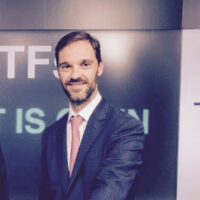

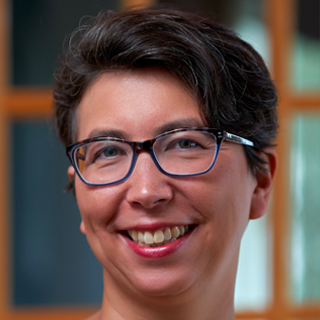
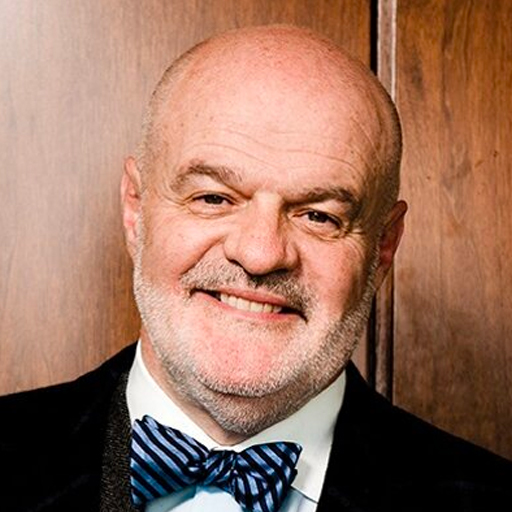




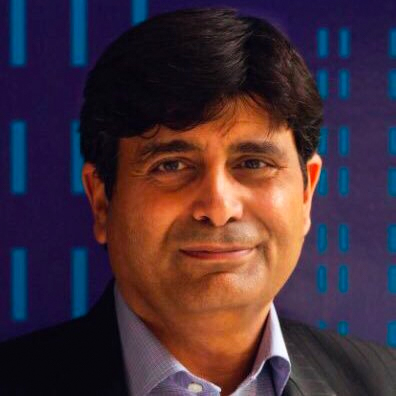
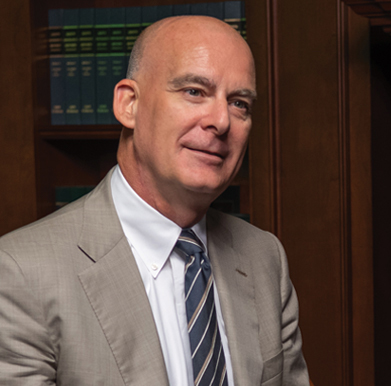
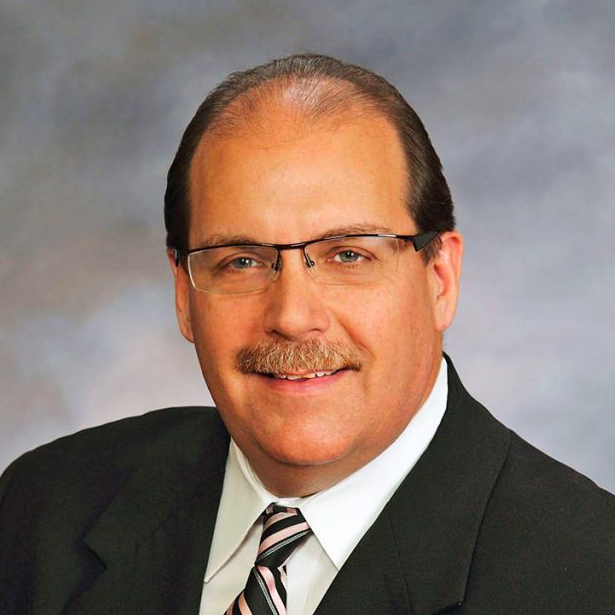











Recent Comments